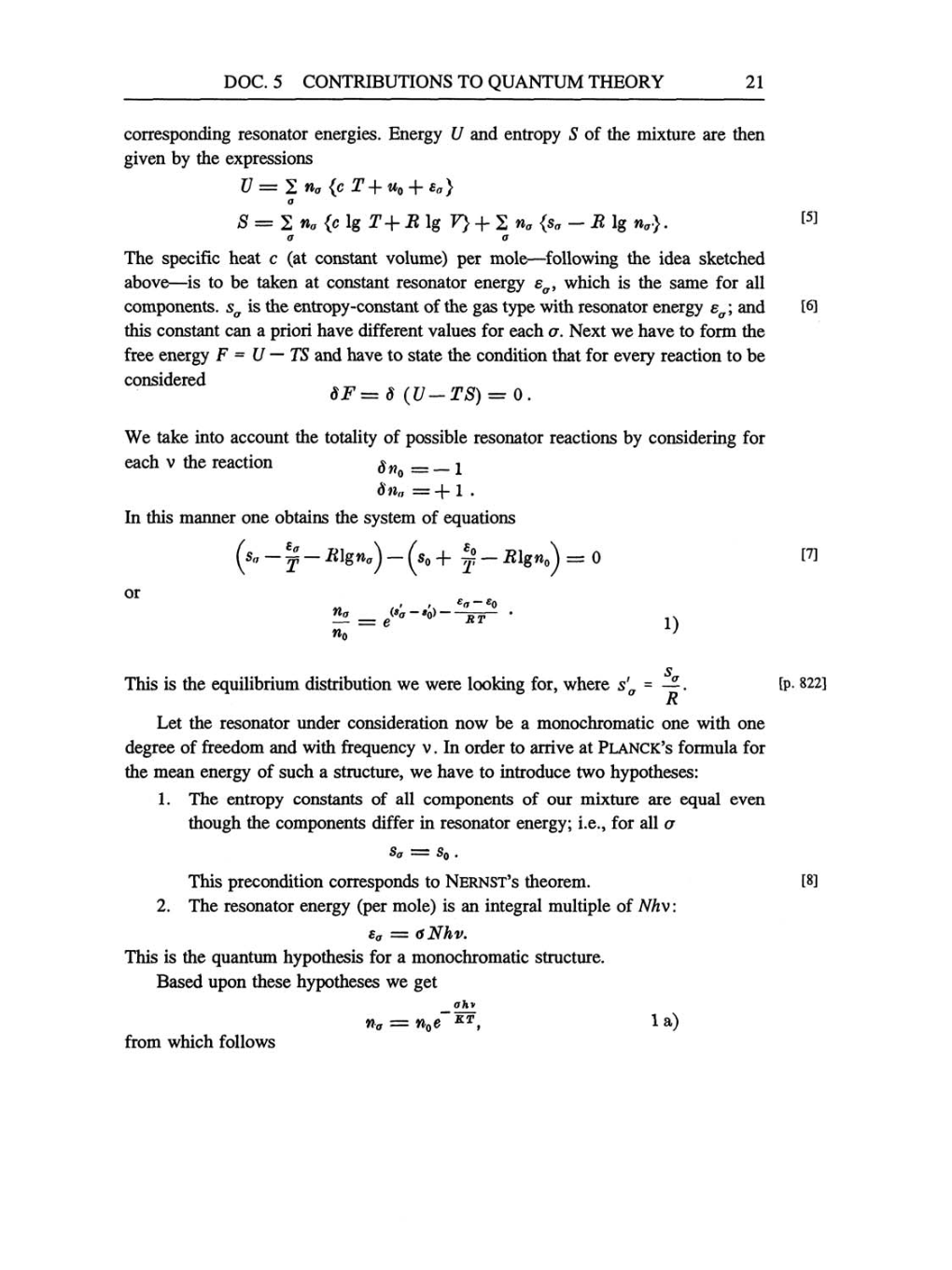DOC.
5
CONTRIBUTIONS TO
QUANTUM
THEORY
21
corresponding
resonator
energies. Energy
U
and
entropy
S
of the mixture
are
then
given by
the
expressions
tJ
=
2
Wo {c
T
+11^
+
sa}
a
S
=
2
tia
{c
lg
T-f B
lg
F)
-f
2
na
{s"
-
R
lg
«"•}.
[5]
The
specific
heat
c
(at
constant
volume)
per
mole-following
the idea sketched
above-is
to
be taken
at
constant resonator
energy
ea,
which
is
the
same
for all
components.
sa
is the
entropy-constant
of the
gas type
with resonator
energy
ea;
and
[6]
this constant
can
a priori
have different values for each
a.
Next
we
have
to
form the
free
energy
F
=
U
-
TS
and have to
state
the
condition that for
every
reaction to be
considered
SF
=
S
(U-TS)
=
0.
We take into account the
totality
of
possible
resonator reactions
by
considering
for
each
v
the reaction
Sn0 = -1
Sn0
=
+1
.
In this
manner one
obtains the
system
of
equations
^So
H~
-?p
- -
0
[7]
or
M t
'
'v
eo-~e0
no
__
(»a
-»«)
YT~
n0
1)
This is the
equilibrium
distribution
we were
looking
for,
where
s'a
=
sa/R.
[p. 822]
Let the resonator under consideration
now
be
a
monochromatic
one
with
one
degree
of freedom and with
frequency v.
In order
to
arrive
at
Planck's
formula for
the
mean energy
of
such
a
structure,
we
have
to
introduce two
hypotheses:
1.
The
entropy
constants
of all
components
of
our
mixture
are
equal
even
though
the
components
differ in
resonator
energy;
i.e.,
for
all
a
S0
=
S0.
This
precondition corresponds
to
Nernst's
theorem.
[8]
2.
The
resonator
energy (per
mole)
is
an integral multiple
of
Nhv:
sa
=
asNhv.
This is the
quantum hypothesis
for
a
monochromatic structure.
Based
upon
these
hypotheses we get
ohv
na
=
n0e KT,
1a)
from which follows
